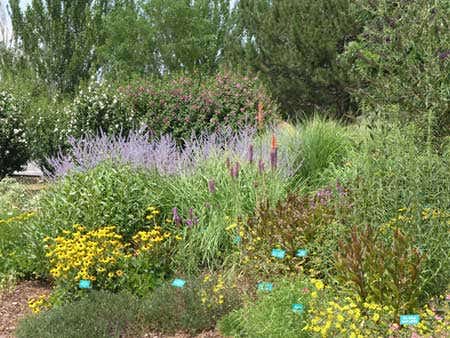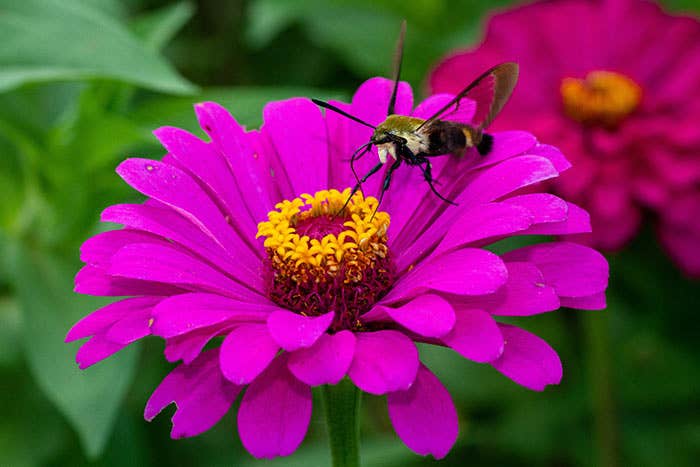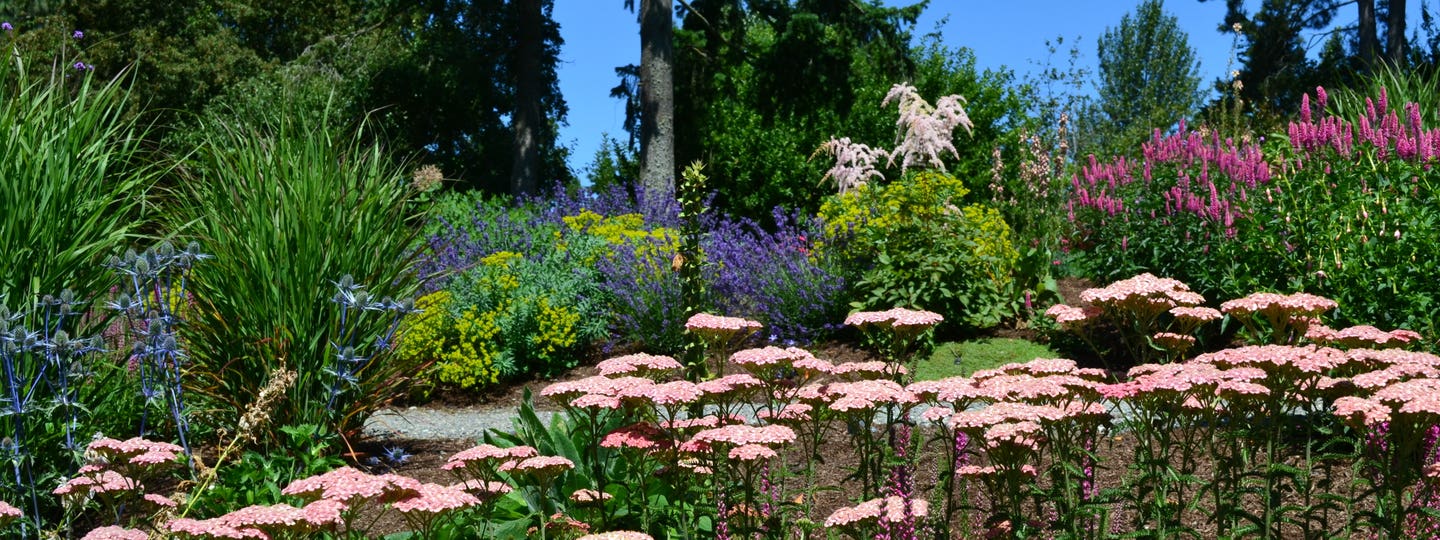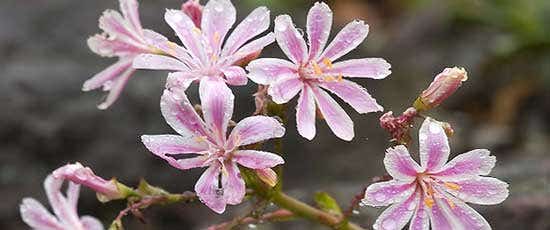Walking the paths that wind through Western Hills Nursery in Occidental, California, one August day many years ago, I happened upon a startlingly beautiful sight. A rectangular stone trough held a single specimen of a plant with gray-green leaves. Its many stems had elongated to make the most graceful arches, each about a foot or so long. They arched up and then down over the edge of the trough, partially obscuring its lip. Several flowering seed heads dangled from each stem, looking very much like the tiered cones of the hemlock tree or the seed heads of the hops plant, but with rose-pink flowers peeking out between the bracts. One of the gardeners came by and identified it as Origanum dictamnus (left), commonly called dittany of Crete.
In general it was as charming a plant as could be. But I realized it particularly appealed to me because it marched to the beat of a different drum. Unlike most plants in the garden, it didn't reach up toward the sunlight, but instead grew outward and then down, marking a new direction that relieved all the spiky, twiggy, upstanding vegetative growth around it. And as I admired the dittany's silhouette, memories of trailing or cascading plants I'd grown myself or admired elsewhere came to my mind.
Back at my Pennsylvania property, we had made a garden on a hillside in the shadows of a hickory tree and a Norwegian pine. A large rock sat near the top of the slope. Corylus avellana ‘Contorta’, or Harry Lauder's walking stick, made an interesting sight for the area just above the rock, and in the space between the rock and the sinuous branches of the corylus we planted Juniperus horizontalis ‘Wiltonii’. This is sometimes sold as blue carpet or blue rug juniper, an apt name for a plant that grows only about four or five inches tall, but whose ground-hugging branches sprout many shorter branchlets of intense silvery blue. After four or five years in the ground, the juniper crept over the rock to pour 10 feet down the hillside. It looked for all the world like an icy river of glacial meltwater flowing between the hostas.
Summertime has always meant baskets of hybrid fuchsias hanging beneath the porch eaves, even back east, where they're grown as annuals. Here in USDA Zone 9, we are blessed with just about perfect conditions for fuchsias; I have them in hanging baskets and in the ground. Like the dittany of Crete, they toss long sprays of drooping stems, from which their big, plump, gaily colored blossoms hang.
Terraces made of stone walls perfectly display trailing plants. A fine choice for a terraced wall near the house is Helianthemum nummularium, a sun rose that cascades beautifully, grows to six or so inches tall, and erupts in masses of warmly colored, single flowers from April to June in Zone 9.
In human society, it's the oddballs who buck the trend who add interest and fun to life. The same holds true in a garden that includes at least a few trailing, cascading plants.





